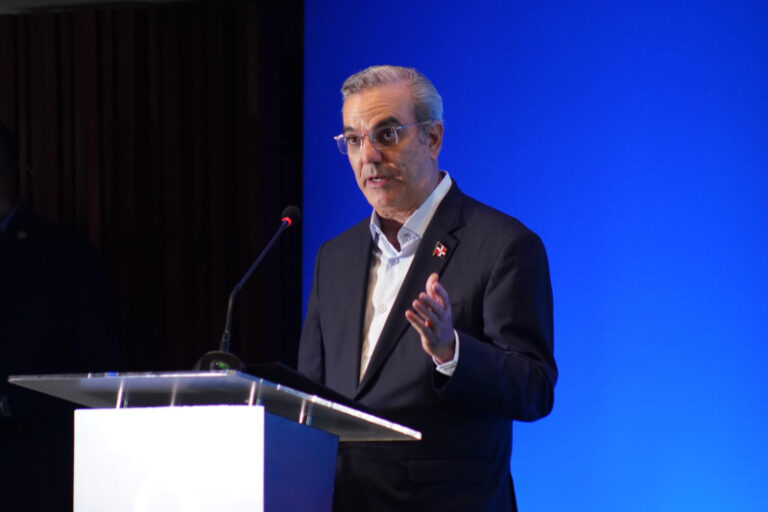This year Latin America experienced the rebound effect.
As 2020 was so hard for the world’s economies because of the COVID-19 pandemic, this year’s growth rates are deceiving. The reason being that Gross Domestic Product (GDP) is measured in relation to the previous year, so, at first glance, it looks like Latin America made a spectacular leap. But the truth is that it is a “rebound effect” because the basis of comparison is very low.
So, looking ahead to next year, the forecasts from international organizations give us a slightly more “realistic” picture of how different countries are evolving.
The most commonly used thermometer to assess the economic health of a country is its GDP. However, there are many others.
For now, let’s take a look at the prospects for economic growth, inflation and risk rating within Latin American economies.
Economic growth
Looking only at economic growth, the economies with the best prospects for next year are Panama, the Dominican Republic, El Salvador and Peru, according to the latest forecasts of the Economic Commission for Latin America (ECLAC).
The following table shows the list of countries that are included in the agency’s studies.

However, the outlook may vary depending on “uneven progress in vaccination programs and the countries´ ability to reverse the structural problems behind their low growth track record before the pandemic,” the agency notes in its “Economic Survey of Latin America and the Caribbean” published in October.
Well positioned
Deputy director of the Latin America Program at the Washington-based Wilson Center think tank, Benjamin Gedan, told BBC Mundo that among the largest economies, there are some like Chile and Colombia that are “reasonably well positioned to recover in 2022, even amid anxiety over the ómicron variant”.
Compared to other countries in the region, the researcher says that Chile is in good shape, because most of its population is fully vaccinated and more than half of Chileans have received a booster.
The South American country’s central bank foresees growth of close to 2% for next year, although the economy could expand faster amid growing demand for its copper and lithium production, Gedan said.
However, doubts remain about how the country will evolve during the term of President-elect Gabriel Boric, and what will happen with the referendum on a new Constitution in the second half of next year.
Colombia, on the other hand, is also in a pretty good position for 2022, the researcher adds, “despite nervousness about its presidential elections” and memories of 2021marred by social unrest in.
Among the smaller countries, Panama is leading ECLAC’s list of growth forecasts for next year. “It seems to be recovering very well,” according to Gedan.
With the recovery of world trade, the Panamanian economy should see a strong push, while President Laurentino Cortizo’s ambitious infrastructure program may also contribute to the expansion.
Still, ómicron could affect Panama’s important tourism industry, something that remains to be seen.
The wave of inflation
One of the headaches in the world and Latin America is the rise in inflation throughout the year.
Although growth in the region is recovering bit by bit, the cost of living is also rising, and many people claim their salary is not enough to buy enough products.
Most governments have tried to counter the inflationary wave by raising interest rates, an issue that also affects consumers because credit becomes more expensive.
Rising inflation has been driven, in part, by rising food prices, wrote Maximiliano Appendino, an economist in the Regional Studies Division of the Western Hemisphere Department of the International Monetary Fund, IMF.
There is a lot of uncertainty in the air regarding raw material prices, bottlenecks in supply chains and rising shipping costs, in addition to the possibility of new variants appearing to aggravate the COVID-19 pandemic.
On the other hand, the region needs to balance an uncertain inflation outlook with employment, which “is still substantially below pre-pandemic levels,” Appendino added.
How is the risk rating?
Like Standard & Poor’s and Fitch Ratings, the US risk rating agency Moody’s Investors Service assesses the solvency of a country to pay its financial obligations, an important indicator to analyze the health of an economy, among others.
According to Moody’s, the following list ranks countries from the best rated to the worst rated, Aaa being the best rating and C the lowest.
Low credit risk
- Chile (A1)
Moderate credit risk
- Mexico (Baa1)
- Peru (Baa1)
- Colombia (Baa2)
- Panama (Baa2)
- Uruguay (Baa2)
Questionable credit quality
- Paraguay (Ba1)
- Guatemala (Ba1)
- Brazil (Ba2)
- Dom. (Ba3)
- Honduras (B1)
- Costa Rica (B2)
- Bolivia (B2)
- Nicaragua (B3)
- El Salvador (Caa1)
- Ecuador (Caa3)
- Argentina (Ca)
- Cuba (Ca)
- Venezuela (C)
Source: Moody’s (December,2021).
A difficult 2022
“Latin America’s growth prospects for 2022 are bleak,” says Gedan.
Not only because of the economic effects that covid-19 has left, but also because the region stumbled upon the pandemic in poor condition.
Next year comes with “a worrying debt hangover and rising inflation,” the researcher argues.
On a political level, public budget cuts could trigger new episodes of social unrest, as happened, for example, in Colombia in April 2021, in response to proposals for economic reforms, argues Gedan. So, political uncertainty in the main economies of Latin America “has limited the investment the region needs to recover.”
This uncertainty is based on how the new governments of Pedro Castillo in Peru and Gabriel Boric in Chile may evolve, and on the results of the 2022 presidential elections in countries such as Colombia and Brazil.
Source:
BBC News



